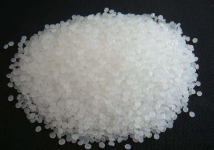read: 847 time:2025-07-14 16:09:15 from:化易天下
Acetone is a widely used solvent in various industries, including pharmaceuticals, cosmetics, and chemical manufacturing. When it comes to extraction processes, acetone stands out as a preferred choice for many professionals. But why use acetone for extraction? This article delves into the reasons behind its popularity, exploring the chemical properties, efficiency, and practical applications that make acetone an ideal solvent for extraction.
Acetone (C₃H₆O) is a polar, aprotic solvent, meaning it has a significant dipole moment but lacks hydrogen atoms that can participate in hydrogen bonding. This unique combination allows acetone to dissolve both polar and non-polar compounds, making it versatile for a wide range of extraction processes. The polarity of acetone enables it to interact with various solutes, breaking down complex mixtures and facilitating the extraction of target compounds with high efficiency.
One of the primary reasons why acetone is used for extraction is its efficiency. Acetone has a low boiling point of 56°C, which means it evaporates quickly. This characteristic is particularly beneficial in extraction processes, where the goal is often to isolate and concentrate specific compounds. After the extraction, acetone can be easily removed by simple evaporation, leaving behind the desired extract with minimal residue. Furthermore, its ability to dissolve both hydrophilic and hydrophobic compounds makes acetone a one-size-fits-all solvent, reducing the need for multiple solvents in a single extraction process.
Acetone is widely used in organic synthesis and purification, where it plays a crucial role in the extraction and purification of organic compounds. In these processes, the solvent’s ability to dissolve a wide range of organic substances is invaluable. Acetone’s miscibility with water and many organic solvents allows for the effective partitioning of compounds between phases during liquid-liquid extraction. This property is particularly useful when separating compounds of interest from reaction mixtures or natural products, which is why acetone is often the solvent of choice for these applications.
While acetone is an effective solvent, it is also considered safer and more environmentally friendly compared to other organic solvents like chloroform or benzene. Acetone is less toxic and has a lower environmental impact, as it is biodegradable and does not persist in the environment. Additionally, its high volatility means it can be easily recovered and recycled in industrial processes, reducing waste and cost. These factors contribute to why acetone is favored for extraction, especially in industries where safety and environmental sustainability are of utmost importance.
Another significant advantage of using acetone for extraction is its cost-effectiveness. Acetone is relatively inexpensive and widely available, making it an economical choice for large-scale extraction processes. Its ability to be reused through distillation further enhances its cost efficiency. For industries focused on optimizing their processes while maintaining high-quality outputs, the economic benefits of using acetone cannot be overstated.
In summary, the question "why use acetone for extraction" can be answered by examining its chemical properties, efficiency, broad applicability, safety, and cost-effectiveness. Acetone's unique combination of being a versatile, efficient, and safe solvent makes it an ideal choice for various extraction processes across different industries. Its widespread use is a testament to its effectiveness in delivering high-quality extracts while also being economically viable and environmentally conscious.

Jincheng Petrochemical's 300000 ton polypropylene plant successfully trial production, 2024 polypropylene market analysis

The ABS market remains sluggish, what is the future direction?

Market differentiation of bisphenol A intensifies: prices rise in East China, while prices generally decline in other regions

The production method and process flow of silicone acrylic lotion, and what are the common raw materials